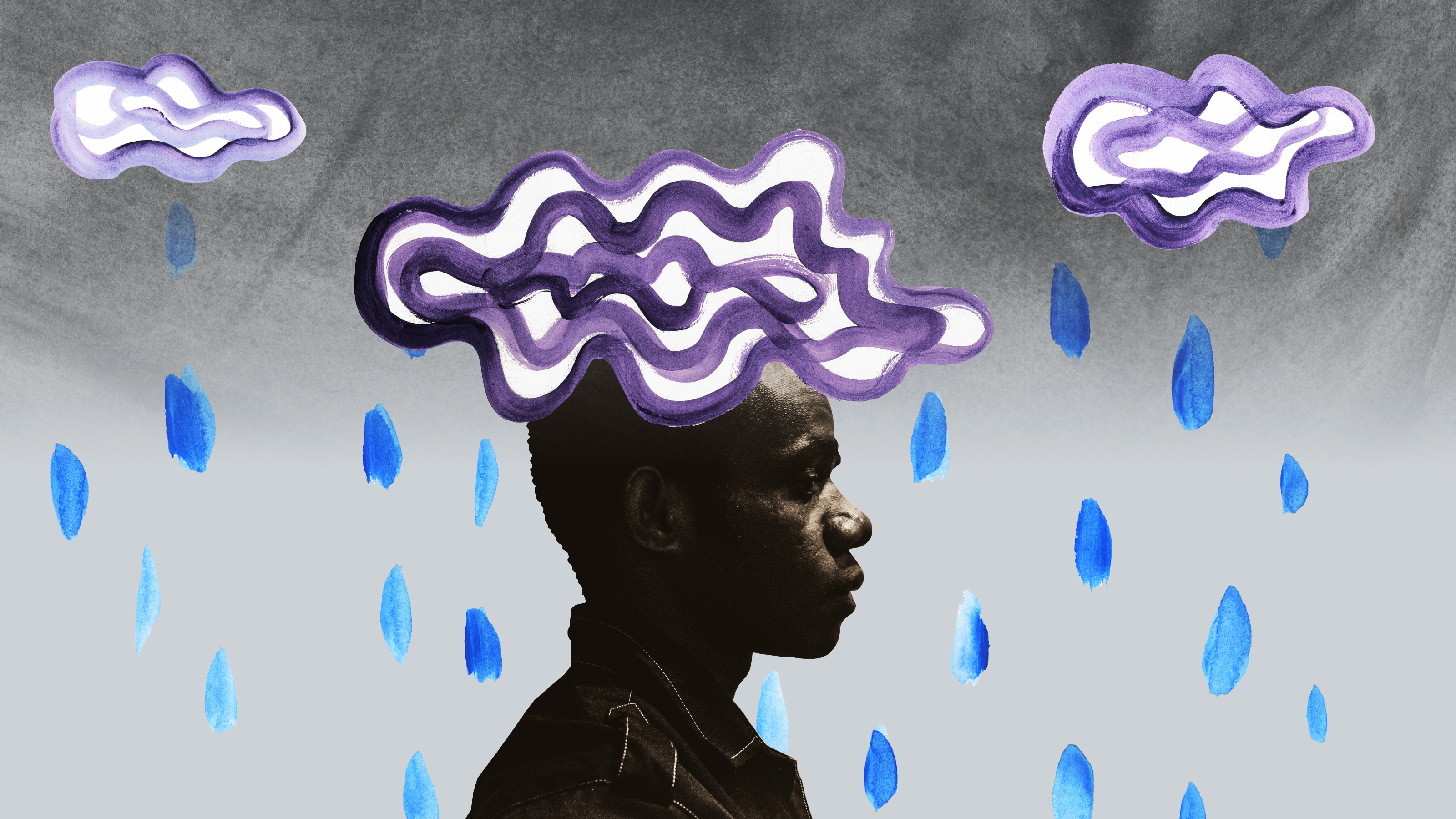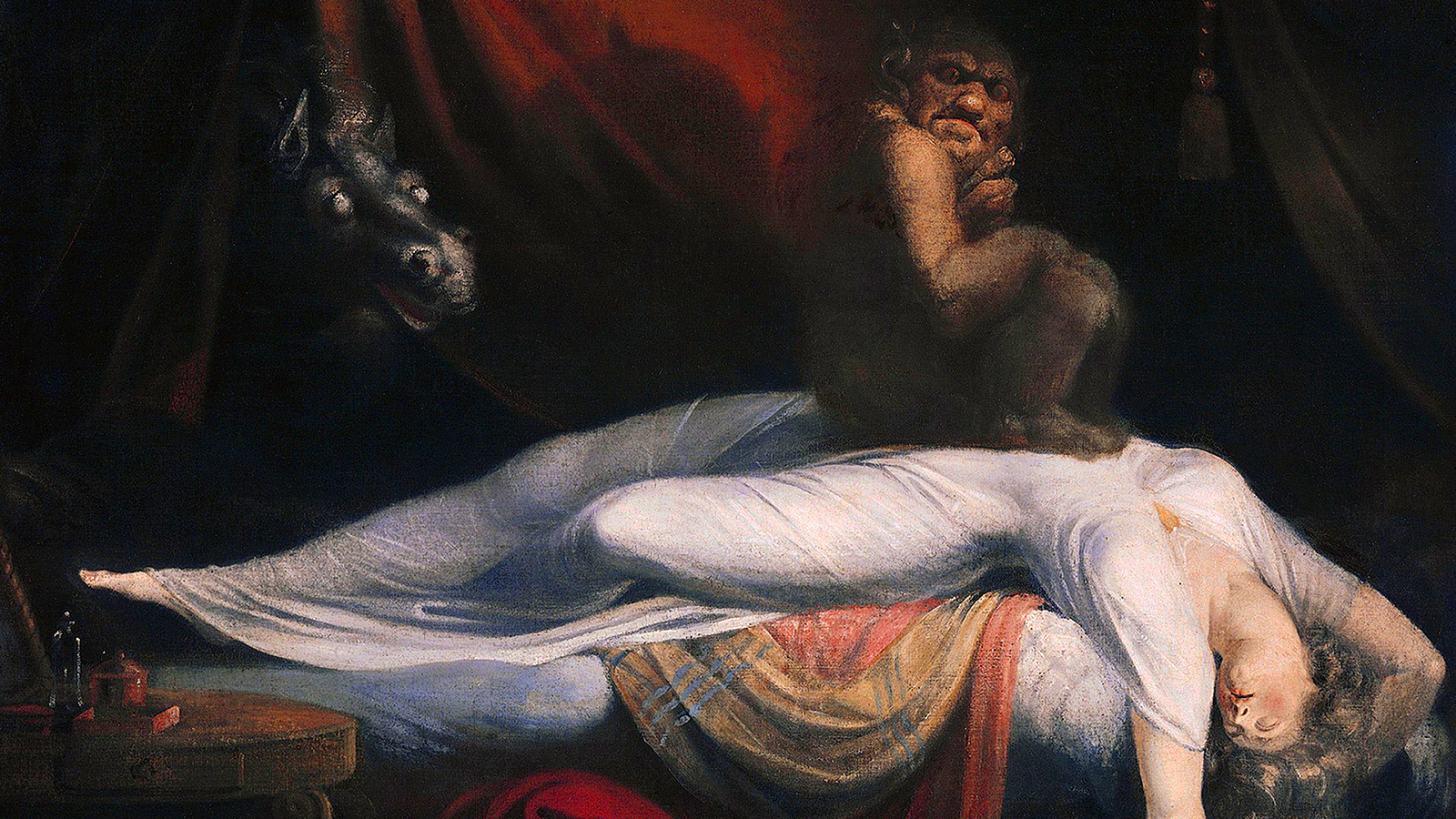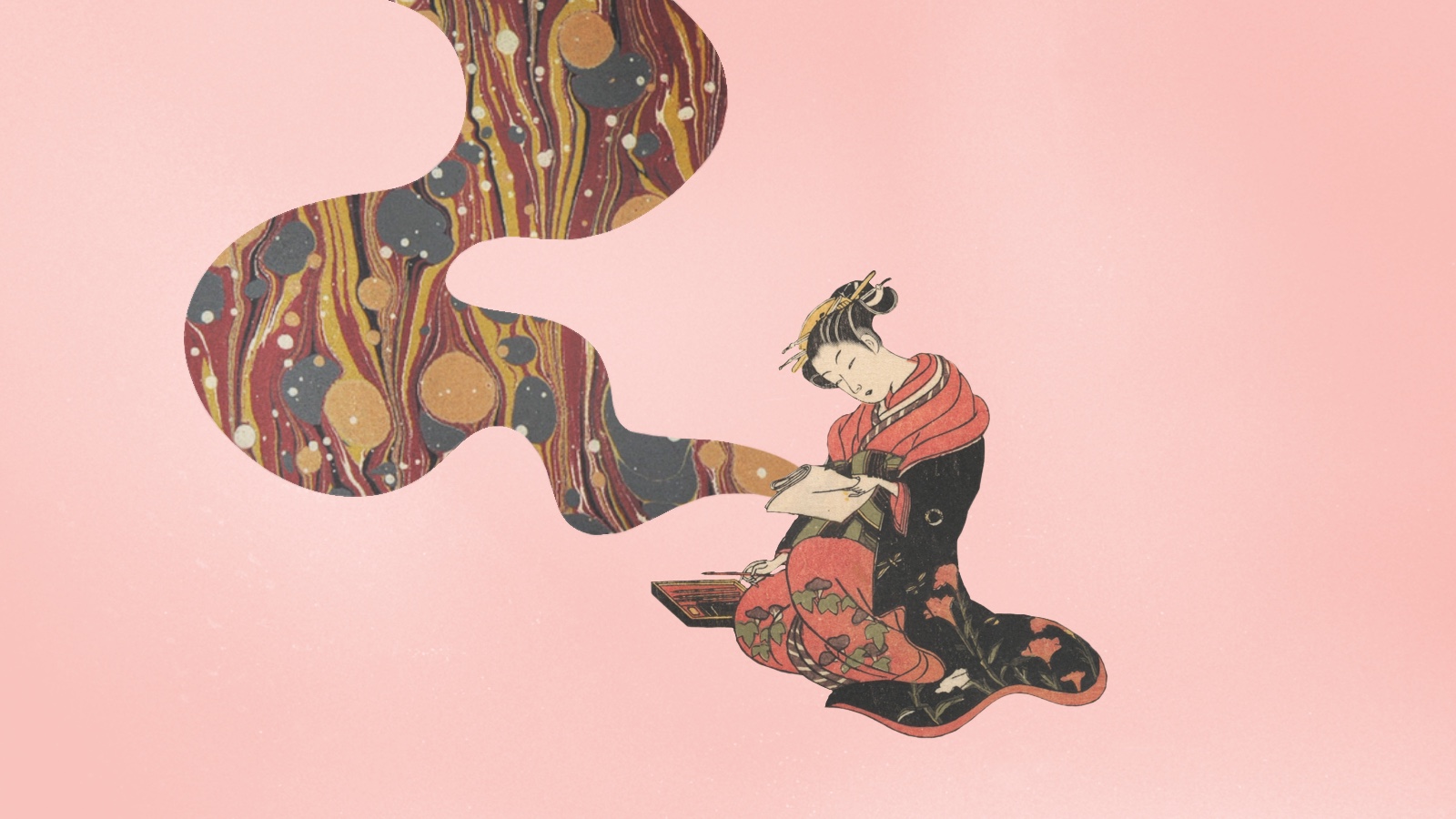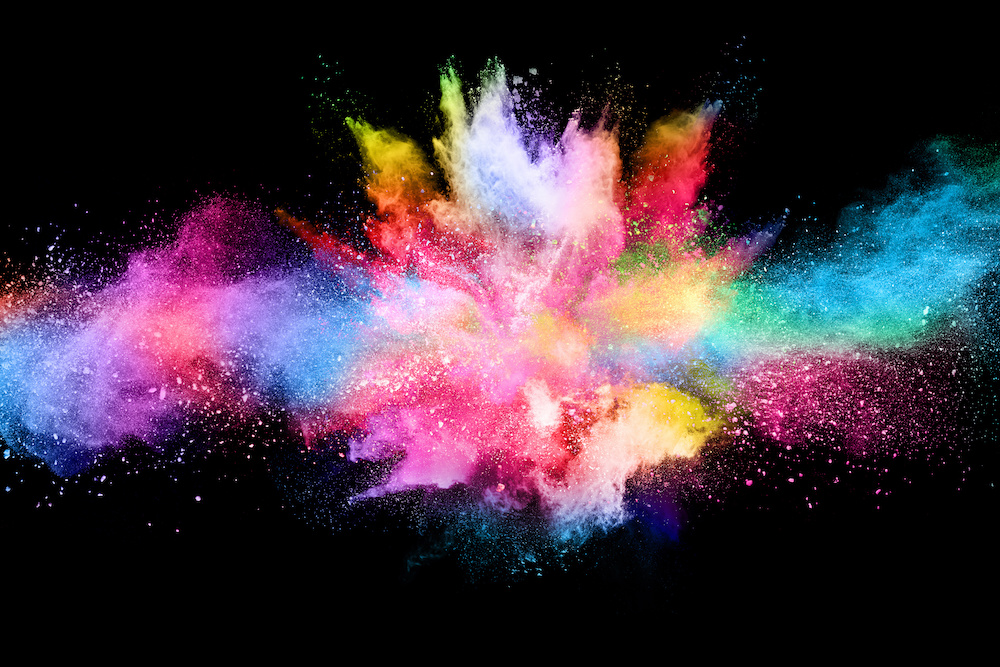The creative sweet spot of dreaming
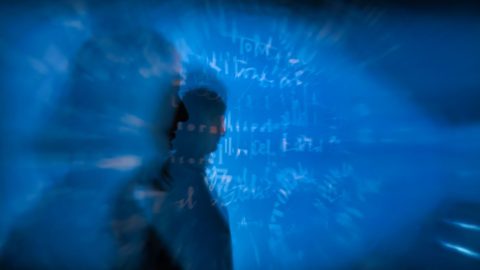
George Church looks like he needs a nap. I’m talking to him on Zoom, and his eyelids have grown heavy, inclining toward slumber. Or maybe my mind is playing tricks on me. He assures me he is wide awake. But sleeping and waking life are often blurred for Church. One of the world’s most imaginative scientists, Church is a narcoleptic.
A rare disorder, narcolepsy causes sudden attacks of sleep, and Church has fallen asleep in some unfortunate circumstances—at The World Economic Forum, just a few feet away from Microsoft founder Bill Gates, for instance. He also had to give up driving due to the risk that a bout of sleepiness will strike while he is behind the wheel. But Church, a Harvard geneticist known for his pathbreaking contributions to numerous fields—from genetics to astrobiology to biomedicine—says the benefits of his condition outweigh the inconveniences. Many of his wildest and most prescient ideas come from his narcoleptic naps.
“The fact is, I fall asleep several times a day, and so almost everything comes from there,” Church says. His idea for a quick and simple way to “read” DNA—which resulted in the first commercial genome sequence, of the human pathogen H. pylori—came from a narcoleptic nap. He also conceived of editing genomes with a method analogous to CRISPR, and building new genomes with off-the-shelf molecules, during narcoleptic naps. More recently, in December, a wild idea for a space probe that could reach distant stars within just 20 years, at one-fifth the speed of light, came to him after a narcoleptic nap. He proposed that these lightning-speed interstellar missions could be launched by microbes and powered by laser sails. The ideas that come to him are often the result of collisions of unexpected images in his head. “I try to turn science fiction into science fact,” Church tells me.

The relationship between sleep, dreaming, and creativity has been the subject of conjecture for hundreds of years. Reports of creative inspiration and discoveries made by artists, inventors, and scientists while dreaming suggest these states of mind are intimately bound together. The symbolist poet Saint-Pol-Roux was known to guard his sleep at night with a sign on his bedroom door that read “Do not disturb: Poet at work.” Russian scientist Dimitri Mendeleev reportedly had a vision of the periodic table in a dream after three days of exhaustive effort (though it may have just been the perfection of an idea he had while awake). Stephen King claims he dreamt up his novel Misery during a somnolent transatlantic flight.
Rather than leave such inspirations to chance, American inventor Thomas Edison designed a strategy for mining his dreams for material.1 He would doze off with a steel ball in each hand. Once his body went limp with sleep, the balls would drop to the floor with a clatter and wake him up. He could then recall details of his dreams and record any insights. This approach was later adopted by many other creative giants, including inventor Nikola Tesla and surrealist painter Salvador Dalí.
This shadowy frontier between waking and dreaming may be the source of humanity’s most novel ideas.
Scientific studies seem to validate these tales. Study participants asked to “incubate” a problem in their dreams often come up with a useful solution, and both the frequency and complexity of one’s dream recall have been correlated with higher scores on creativity evaluations.2 The stage of sleep most closely associated with creative inspiration is known as REM, short for rapid eye movement. REM sleep begins about 70 minutes after a person loses consciousness and is rich with dream life. Lucid dreams, in which the dreamer knows he or she is dreaming and can sometimes direct the dream, are thought to primarily occur in REM.3Waking from REM sleep has been shown to improve study subjects’ ability to solve anagrams—a word, phrase or name formed by rearranging the letters of another—and to puzzle out problems that require making associations between loosely related ideas.2
But researchers have recently identified another state of mind that lies in the transition between waking and sleeping and may be even more fertile for creative inspiration than REM. It is called N1 or sleep onset, and it is the first of three stages in pre-REM sleep. People with narcolepsy frequently fall into and out of N1 during daytime naps, giving them much greater access to these borderland perceptual states than normal sleepers.1
N1 is a hybrid, or “semilucid” state of mind, says French neuroscientist Celia Lacaux, when individuals are just beginning to detach from the waking environment. It is a mental twilight that allows one to “freely watch the mind wander while maintaining a logical ability to identify creative sparks,” says Lacaux. This shadowy frontier between waking and dreaming, to which all sleepers have access, may be the source of many of humanity’s most novel ideas, inventions, and works of art. Psychologists call it “hypnagogia,” after the Greek words for “sleep” (hypnos) and “to lead” (agogo). The French sometimes refer to it as “entre chien et loup,” literally “between dog and wolf.”
The more symptoms of narcolepsy subjects had, the greater their creativity.
Like REM sleep, N1 often features involuntary dream-like perceptual phenomena. These are known as hypnagogic hallucinations, and they combine details from recent waking experiences with loosely associated memories in novel or unusual ways. The difference is that in N1, the dreamer is closer to the surface of sleep, to conscious control and to the external perceptual environment.4
“Hypnagogia happens to be a time period where you are much more subject to outside influence and where you’re doing much more auditory processing and where your dream recall rates are much higher,” says Adam Haar, a dream researcher at MIT Media Lab. It is characterized by phenomenological unpredictability, distorted perception of space and time, and spontaneous, fluid idea association.
A relationship between hypnagogia and creativity makes intuitive sense. One major theory of creativity posits that it results when our minds make connections between distantly related concepts stored in our memories.5 This is a process that is thought to occur naturally during sleeping and dreaming: New memories mingle in novel and abstract ways with older ones as a means of consolidating them, laying down tracks in our brains for later recollection. Neuroscientist Karl Friston, who studies consciousness, proposes that this mashing together of old and new is a process that helps to minimize redundancy and complexity in our memory system, and prepares us to navigate a fuller range of possible scenarios in our waking lives.2
But wild associations between remote ideas and memories are, by themselves, not sufficient for creativity to flourish. Truly creative ideas are not just novel, but useful,6 so creative cognition must also include processes of evaluation and discrimination.7 Of course, the sharper and more discriminating the mind, the more interesting and diverse the bank of ideas that mind will have to pull from, and the more brilliant the insights. (“Chance favors only the prepared mind,” as Louis Pasteur, one of the founders of microbiology, is reported to have said.) Evaluation and discrimination are executive processes that require some conscious control and typically occur when one is awake.8
A few years ago, Lacaux, who works at a treatment center for narcoleptic patients in Paris, decided to test a hunch that narcoleptics are more creative than the general population, given their unique access to hybrid states between sleeping and waking. She recruited 185 narcolepsy patients and 126 normal sleeper controls from France and Italy and drilled them on measures of creativity and creative achievement. Study participants were asked, for example, to come up with as many ideas as possible related to a verbal or visual prompt, including inventing endings to a story and generating drawings incorporating a particular shape. They were also asked to weave multiple pre-selected elements, both abstract and concrete, into a unique original story and drawing.
The belief in one’s powers of creativity becomes self-fulfilling.
Lacaux and her colleagues found that, in general, and over time, patients with narcolepsy scored higher on all measures of creativity in standard evaluations, but only a few of them put this creative potential to use in career or achievement-oriented ways. Her narcoleptic subjects scored higher in all categories—visual, verbal, abstract and concrete, convergent and divergent modes of thinking. The more symptoms of narcolepsy subjects had—all of them hybrid states between wakefulness and sleep, such as sleep paralysis, waking hallucinations, or dream enactment—the greater their creativity.2
In a subsequent study, Lacaux set out to examine whether short bouts of N1 sleep, so common among narcoleptics, were uniquely associated with increased creativity. She presented 103 normal sleepers with a series of mathematical problems that could be almost instantly solved with a hidden rule. Then, in an exercise inspired by Edison, the study subjects were asked to take a 20-minute break, relaxing with their eyes closed, an object in their right hands, while their brains were monitored with electrodes. Lacaux and her colleagues found that as little as 15 seconds in N1 sleep tripled the chance that participants would have a moment of creative insight after the break and discover the rule, compared to participants who remained awake. If participants fell past N1 sleep into N2, a deeper stage of pre-REM sleep, this creative sweet spot was lost.1
“It was a bit of a confirmation of Thomas Edison’s story,” says Lacaux, “because Thomas had a feeling that sleep onset was great, but that he needed to wake up from that moment, not go into deeper sleep, or he would lose the beneficial effect on creativity.”
How to catch dreams
In their study of N1 sleep, Lacaux and her colleagues identified what they believe is a neurological signature of creativity in their brain monitoring data. Her subjects were most successful at problem solving—whether in N1 or even, in a few instances, while “awake”—when their brain waves contained a moderate amount of alpha (a marker of the wake-sleep transition) and a low level of delta (a marker of deep sleep) oscillations. Such a combination—which they found primarily when subjects were in N1, either during the descent into sleep or waking from it—would be consistent with an interplay between cognitive control and spontaneous dissociative thought and imagery, the hallmarks of creative cognition.
Lacaux would ultimately like to use the brain wave data to design a more reliable way of boosting creativity on demand, in the tradition of Edison and Dalí, without the aid of technological tools or sleep recordings. She thinks auditory neurofeedback might work, recording online in real time the brain activity of subjects, using spectral analysis. When a participant hits the creative sweet spot, they might be awakened with a particular tone. Another tone could be used to encourage the participant to keep trying. Ultimately, the sleeper would learn to recognize and enter the particular brain state that inspires creativity by himself or herself.
In the meantime, Lacaux and her labmates have been experimenting on themselves with cruder instruments. They take naps during the afternoons holding a plastic bottle, the object used in their study of N1 sleep, waiting for it to drop. “But in the future, we would need to develop more sophisticated tools, because the bottle was nice, but it was not super precise,” she says. Finding the right object was a struggle. It had to be large enough so that the fist could not close around it and prevent it from falling, slippery enough that it would fall with the subtle relaxation of the muscles and heavy enough to make a noise. But it had to be light enough that it would not give the sleeper arm cramps. For a month, Lacaux and her colleagues tried out different objects: spoons, small steel spheres, stress balls. Finally, she was in a small shop in Paris and found a 6-by-2-inch plastic bottle that weighed 2 ounces. It cost €3, and it was an excellent dream catcher. After she was able to successfully arouse herself from a dream, she and her colleagues went back and bought the store’s entire stock.
Like Lacaux, Haar is looking into ways to easily wake dreamers at the right moment without the aid of technology. Several years ago, he created a device called the Dormio, a wearable glove that collects biosignals including muscle tone, heart rate changes, and changes in skin conductance to identify a sleepers’ descent into sleep. It then awakens dreamers with an audio cue to help them capture dream content before it is forgotten. But it seems like even an audio interface on a cell phone or a computer, no sensors, might suffice. Instead of tracking hypnagogia, it asks people to guess how long it takes for them to fall asleep and then it adds a few minutes on. “It seems like there’s a big margin of error, and we still get really good dream incorporation rates.” What he has learned with the Dormio is that there is much more continuity between dreams and daydreams than he originally thought.
Short sleeps
Church testifies to the unique power of short bouts of sleep. For a period, he was recording the long dream narratives that came out of his nighttime sleep, but he primarily found the practice time-consuming, as opposed to offering inspiration for his work. He also went through a phase where he was able to control his dreams. His favorite dream activity was flying, but just for the thrill of it. It didn’t yield any creative insights. “The recording of the dreams, which I did for several months, and the guiding my dreams, which I did for a couple of years, never contributed anything useful,” he says.
During his daytime naps, Church often notices that his dream state is mingled with the external world, that the images he sees in his dreaming mind are blended with everyday life. He might, for instance, see the face of the person he is talking to superimposed on his dream and have difficulty knowing whether what he is seeing is reality or not. “The advantage of the dream state is that you think of juxtapositions that you wouldn’t think of if you’re just thinking logically,” he tells me.
Hypnagogic hallucinations have been shown to make people believe they are inherently creative, according to a 2020 study, and this self-belief is actually among the most important predictors of creative performance and achievement. “In narcoleptic patients there is an association between self-perception of creativity and hypnagogic phenomena,” the authors of the study wrote. The belief in one’s powers of creativity becomes self-fulfilling.9
Despite the real dangers of falling asleep during the day—while cooking, say, or walking down the street—Church has chosen not to take medications that could remedy his daytime sleepiness. He wants to continue to heed the ideas that come to him during naps. “Almost all of our projects have, at one point or another, been described as impossible or useless,” he says. “But they tend to work out.”
References
1. Lacaux, C., et al. Sleep onset is a creative sweet spot. Science Advances 7, eabj5866 (2021).
2. Lacaux, C., et al. Increased creative thinking in narcolepsy. Brain 142, 1988-1999 (2019).
3. Stumbrys, T. & Erlacher, D. Lucid dreaming during NREM sleep: Two case reports. International Journal of Dream Research 5 151-155 (2012).
4. Horowitz, A., Esfahany, K., Gálvez, T.V., Maes, P., & Stickgold, R. Targeted dreaming increases waking creativity. Current Biology (2022).
5. Benedek, M. & Neubauer, A.C. Revisiting Mednick’s Model on creativity-related differences in associative hierarchies. Evidence for a common path to uncommon thought. Journal of Creative Behavior 47, 273-289 (2013).
6. Diedrich, J., Benedek, M., Jauk, E., & Neubauer, A.C. Are creative ideas novel and useful? Psychology of Aesthetics, Creativity and the Arts 9, 35-40 (2015).
7. Beaty, R.E., Silvia, P.J., Nusbaum, E.C., Jauk, E., & Benedek, M. The roles of associative and executive processes in creative cognition. Memory & Cognition 42, 1186-1197 (2014).
8. Fogel, S., et al. While you were sleeping: Evidence for high-level executive processing of an auditory narrative during sleep. Consciousness and Cognition 100, 103306 (2022).
9. D’Anselmo, A., et al. Creativity in narcolepsy type 1: The role of dissociated REM sleep manifestations. Nature Science Sleep 12, 1191-1200 (2020).
This article originally appeared on Nautilus, a science and culture magazine for curious readers. Sign up for the Nautilus newsletter.
